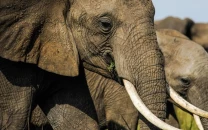43 revisions
350 paintings, drawings and photographs, which trace the development of Sri Lankan art from the 1920s to date.

43 revisions
It is a quiet Saturday morning, on wide roads, rain trees shading the affluent Colombo 7 area, holding out an intense, oncoming humidity, leafy, green, fragrant. Turn on to a small side-road, and you have arrived at the 100-year old bungalow, at 32/4 Barnes Place. Here lies Sapumal Foundation. It is fabled as possessing one of the finest collections of modern art in Sri Lanka.
The Foundation was established in 1974 by portrait artist Harry Pieris. Managed by a trust, it serves primarily as a gallery and as an art resource space. The property maintains a detailed reference library and newspaper archive, supplying both university and independent research projects. It also contains on its premises a working studio and a flat for art residencies. And it maintains Pieris’ permanent art collection. At any one time, there are on display some 350 paintings, drawings and photographs, which trace the development of Sri Lankan art from the 1920s to date.
The core of the collection consists of work by members of the original ‘43 Group. As its name implies, the Group was founded in Colombo in 1943, as a reaction against the then prevalent mode of painting, Victorian naturalism and the redundancy of its patron, the Ceylon Society of Arts. Regularly barred from exhibiting by the judges of the Society, the ‘43 Group provided a platform for new, experimental expression in Sri Lanka.
Though lesser known, Justin Daraniyagala might be considered iconic of the artists in this first modernist rush. Born and raised in Colombo (1903 – 1967), Daraniyagala trained as a lawyer at Cambridge, before he joined the Slade School of Art and then an atelier in Paris for two years. Exposed to the pulse of European avant-garde art, Daraniyagala met with Picasso and Matisse, both of whom influenced his own practice. He also maintained close ties with Pieris and photographer Lionel Wendt, based in London, with whom he would inaugurate the ’43 Group, once back home.
A revisionist by nature, Daraniyagala worked and reworked his canvases, moved by Picasso’s creed that a painting is the sum of its destructions. Applying this view to thematics, he understood the hybrid quality of his own impulses. Daraniyagala may well have conceived his pieces after canonical western themes, but he would infuse their temperament with intense, researched, “locality”.
Whilst describing his personal collection of Sinhalese masks for instance, he wrote: “The craftsman borrows elements from the human, animal, and even vegetable worlds… imparting to [the mask]… that terrifyingly beautiful quality, which is one of its chief characteristics.”
One may find such an engagement in his painting, “Woman and Bull”. A sense of sensuous, undulating violence marks the painting. Its dense layers of colour suggest the emergence and critical suspension of its two central figures. The face of the female form is entirely obliterated.
Daraniyagala was very much a part of the intelligentsia of his times. And this was so, not only in his exploration of erotic metaphor. More poignantly, he explored the nature of his own intellectual and aesthetic lineage. The “terrifyingly beautiful” allure of this canvas speaks volumes to the complexity of his period. And it resonates perhaps to date.
One amongst numerous paintings bought by Harry Pieris, it hangs now in the central lounge of the Pieris home. From here, room upon room opens onto cool polished cement floors and high ceilings, walls filled with paintings. The light here is dappled, and carries with it the scent of champa and jasmine flowers from the rambling green garden outside. There is nothing of the museum here, nor of monument. Instead, one discovers a manner of generosity. Sapumal Foundation provides an excerpt of art history, at human scale, in simple, richly distilled lines.
Published in The Express Tribune, November 25th, 2011.



















COMMENTS
Comments are moderated and generally will be posted if they are on-topic and not abusive.
For more information, please see our Comments FAQ